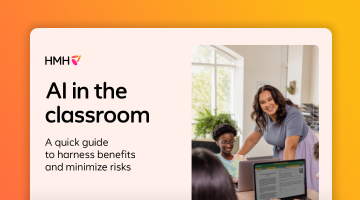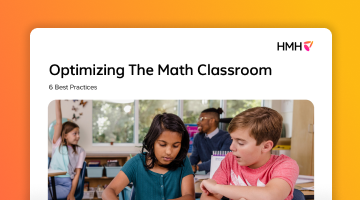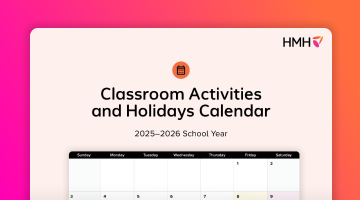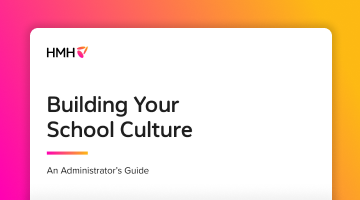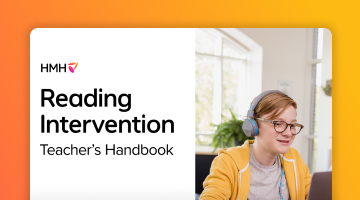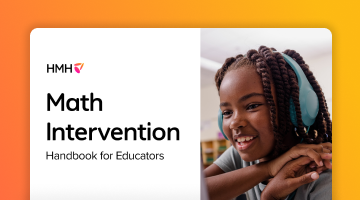At a glance
- Programs: Read 180®, System 44®
- Subjects: Literacy Curriculum, Intervention Curriculum
- Report Type: Efficacy Study
- Grade Level: Middle, High
- Region: Northeast
- Population: English Learners, Students with Disabilities
- District Urbanicity: Urban
- District Size: Medium
- Implementation Model: 40-59 Minutes, 60-79 Minutes, 80+ Minutes, A/B Model
Read 180 now incorporates the comprehensive foundational literacy skills scope and sequence from System 44.
Two-thirds of READ 180 students at KIPP NYC doubled their expected annual average in growth in reading.
Knowledge Is Power Program® (KIPP) is a national network of free, open-enrollment, college-preparatory public charter schools with a track record of preparing students in underserved communities for success in college and in life. KIPP NYC, a part of the national network, consists of 11 schools, enrolling approximately 4,700 students in Grades K–12. There are five elementary schools, five middle schools, and one high school in KIPP NYC. The majority of the student body is African American (47%) or Hispanic (50%) and receives free or reduced-price lunch (90%). Eighteen percent are students with disabilities, and 8% are English learners (ELs). The student attendance rate is 95.4%, and the annual student mobility rate is 5%. KIPP NYC’s mission is “to teach our students to develop the character and academic skills necessary to succeed in high school and college, to be self-sufficient, successful, and happy in the competitive world, and to build a better tomorrow for themselves and us all.”
During the 2014–2015 school year, 321 fifth- through ninth-grade students in all five of KIPP NYC’s middle schools and its one high school were selected to participate in a study of READ 180’s effectiveness. Students scoring Basic or Below Basic on the Reading Inventory® were placed into READ 180 classrooms at KIPP NYC, where they were expected to receive 45 to 90 minutes of instruction five times per week. The model varied across the schools, with some classrooms using a stand-alone READ 180 Next Generation implementation and some classrooms using an integrated READ 180 Next Generation/System 44 Next Generation model.
Data from NWEA® MAP® and Reading Inventory were collected and analyzed for 321 students (59 fifth graders, 98 sixth graders, 85 seventh graders, 27 eighth graders, and 52 ninth graders) who used the program during the 2014–2015 school year. READ 180 students averaged 89 total sessions, at about three sessions per week.
On average, students grew 163L on the Reading Inventory. Eighty-four percent of students met or exceeded annual average growth, and 65% of students met or exceeded two times their annual average growth. Students showed forward momentum in change in proficiency band status over the course of the year. The percentage of students who scored Proficient or Advanced on the Reading Inventory increased significantly from 2% in the fall to 27% in the spring. See Graph 1.

GRAPH 1. KIPP NYC READ 180 Students Grades 5–9 (N=321)
Performance Band Distribution on Reading Inventory, 2014–2015
Note. Due to rounding, not all bars will total 100%.
Students averaged a significant gain of 7 RIT points on MAP, with 70% of students meeting or exceeding typical fall-to-spring MAP growth. For English learners, 65% exceeded typical MAP growth, and 82% exceeded annual average growth on the Reading Inventory. See Graph 2. For students with an individualized education plan (IEP), 76% exceeded typical MAP growth, and 82% exceeded annual average growth on the Reading Inventory. See Graph 3.

GRAPH 2. KIPP NYC READ 180 English Learner (EL) Students, Grades 5–9 (N=321)
Performance on MAP and Reading Inventory, 2014–2015

GRAPH 3. KIPP NYC READ 180 Students, Grades 5–9 (N=321)
Performance on MAP and Reading Inventory, 2014–2015

